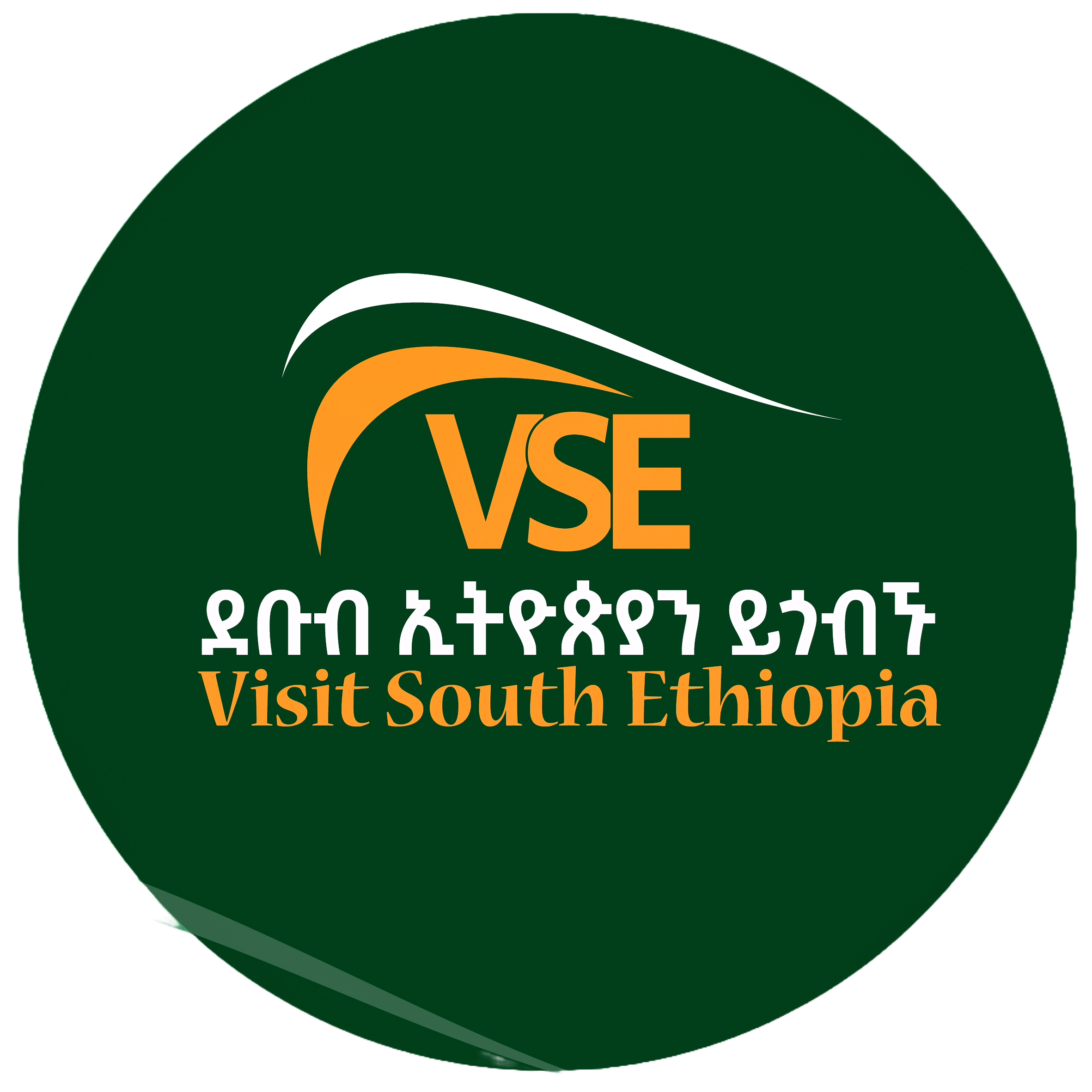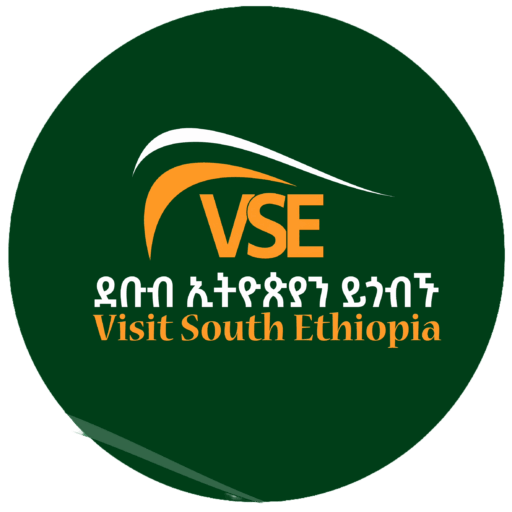Destinations
🌍 Popular Destinations in South Ethiopia
Nile Corocodile
Huge Nile Corocodile found on lake chamo
Hippos
Hippos found on the lake.
The twin Lakes
Abaya and Chamo lakes
Lake chamo
Lake chamo
Lake Abaya
Lake Abaya: one of the biggest rift valley lakes.
Arba Minch
Famous for the twin lakes (Chamo and Abaya), Nechisar National Park, and the “Crocodile Market” boat tours. Arbaminch is one of the biggest towns in the southern region. It is situated in front of the two lakes Abaya and Chamo.
Lakes Chamo and Abaya
- Lake Abaya is the biggest one of the Rift Valley lakes,
- Lake Chamo is known for its huge Nile crocodile and hippo population which attracts a large number of tourists.
The lake’s attractions are best experienced during a scenic boat trip, offering close-up views of wildlife and beautiful surroundings.Arba Minch is divided into two main sections: the lower town and the upper town, where most of the hotels are located. From the upper part, visitors can enjoy stunning panoramic views of the national park and the surrounding landscape.
Dorze Village (Chencha)
Dorze Village (Chencha)
Traditional Huts
dorze-village-traditional-elephantshaped-huts
Dorze cotton- weaving
Dorze cotton- weaving
Dorze Village (Chencha)
Traditional bamboo houses with beehive shapes
Renowned weaving and textile traditions
Cultural experiences with the Dorze people and panoramic mountain views
The Dorze people live in the Guge mountains near Arba Minch, in a cold and misty climate.
They are very famous for their skills in cotton- weaving.
Many of the traditional cotton clothes of the Ethiopians come from Chencha, the biggest town in the area.
Konso Land scape
Konso Land scape
Konso Land scape
Konso Land scape – UNESCO heritage site
Konso cultural land scape
Konso cultural land scape terraced agriculture. UNESCO world heritage site
Waga statues
Waga statues.
anthropomorphic wooden statues.
Konso
A UNESCO World Heritage Site.
Famous for terraced agriculture and Waga statues. (wooden grave markers)
Explore Konso cultural landscapes and traditional villages.
Wolaita
Wolaita Sodo is a political and administrative center of the Wolaita Zone and South Ethiopia Regional State.
It is home to Wolaita Sodo university, and people of different nationalities living together. Wolayttattuwa is widely spoken in the city.
There are different potential tourist sites, that were selected in the Wolaita Zone to assess the region’s ability to capture the natural heritage and cultural heritage tourist markets.
Some of the sites found in wolaita are:
Ajora Falls: The Ajora Falls are twin waterfalls formed by the Ajancho and Skoke rivers.
Mochena Borago: The Mochena Borago Rockshelter is located northwest of the city of Wolaita Sodo, on the southwestern slope of Mt. Damota.
Mount Damota: is found in wolaita zone Sodo Zuria district about 12 k.m away from the town of Wolaita Sodo to the North, and is nearly 3000 meter above sea level.
Arujia man made cave
Wolaita is also known for its raw meet. Its the destination for raw meat lovers.
Ajora Fall
twin waterfalls formed by the Ajancho and Skoke rivers.
Ajora Falls: twin waterfalls formed by the Ajancho and Skoke rivers.
Mochena Borago: Rockshelter.
Mount Damota
is nearly 3000 meter above sea level.
Raw Meat
Arujia: Manmade cave.
Resa Dango Water fall
Sika Water Fall
Tuti Plant Stone
UNESCO REGISTERED Gedeo Cultural Landscape
Gedeo Coffee
Gedeo
The land of Green and Wonderful Natural Resources. The Owner of the Finest Coffee in the World, Yirgacheffe Coffee.
Some of Tourist Attractions Site in Gedeo Zone are:-
Tututi plant stone
Resa Dango waterfall
Sika waterfall
Gedeo People Agro Forestery The Gedeo Combined Forestry System is a system that ensures the sustainable development of the environment by planting, caring for and protecting various native trees, coffee, coffee and other plants suitable for environmental development. It has been 5000 years since farming started in the Gedeo community, and the main evidence for this is the shape of a cow on Odola-Gelma stone, which is an ancient civilization trace in the district around Dila in the Gedeo zone. According to senior research experts.
Kore Traditional Hut
Water Fall
Water Fall
Kore Zone
Koore is well known and rich by yearly overflowing rivers. Bewaye, Sarmale (Segen), Duano, Sooqeyndo Kondilcho, and Magga are some of them.
Omo Valley tribes
The Omo Valley is home to around 200,000 people from 80 distinct tribes, speaking 47 languages — including the unique Omotic family. This small region is a cultural crossroads where four major African linguistic groups converge, making it one of the most diverse places on the continent.
A Journey of True Cultural Immersion
Traveling to South Ethiopia offers a rare window into communities whose lives are deeply rooted in nature and simplicity. Far removed from modern distractions and economic shifts, these cultures reveal that happiness doesn’t come from material wealth, but from living in harmony with the environment. They are not primitive—just profoundly different, with values that challenge and inspire the modern worldview.
Some of the destinations include:-
Mursi & Surma Tribes
Mursi_Tribe
Mursi girl
Mursi tribe Lip and ear adornments
Mursi Kids
Mursi Tribe
Surma tribe lip plates
Donga Stick fighting Surma and Suri tribe
Surma tribe Lip and ear adornments
Surma Donga stick fighting
Mursi & Surma : people of labial and lobular plates.
A Living Culture That Inspires
In the highlands and savannahs of South Ethiopia, diverse communities proudly uphold traditions that leave a lasting impression.
Women express beauty and strength through symbolic lip and ear adornments, while men display courage and honor in age-old stick-fighting ceremonies. These vibrant customs offer visitors a rare and authentic glimpse into a way of life both timeless and deeply meaningful.
Hamer (Hamar or Hammer) & Benna Tribes
Hamar Tribe Girl
Hamar Tribe
Ukuli Bula – Wedding Ritual of the Hamar Tribe and benna tribe
Hammer Young girls playing Evangady.
Hamar girl
Bena tribe girl
Bena tribe men
Bena tribe girl
Bana Tribe Kids walking on sticks.
bana man
The Bull-Jumping people.
Nestled in the remote Omotic region beyond Mount Buska in the far southwest, the Hamer and Benna peoples have remained shrouded in mystery for over fifty years.
These fascinating communities, known for their rich traditional wisdom, are famous for the unique “jumping of the bull” ceremony. This ritual marks both the transition from boyhood to adulthood and serves as a vibrant courting event, where men and women dress in striking ochre body paint and feathers to attract a partner.
Men adorn their skin and hair with ochre and ostrich feathers, while women style their hair in short tufts coated with a mixture of ochre and fat.
Suri Tribe
Suri Tribe Girl
Floral Headpiece Suri Tribe
Floral Headpiece Suri Tribe
Suri Tribe men
The Suri are an agro-pastoral people and inhabit part of the West Omo zone of the South Ethiiopia in Ethiopia as well as parts of neighbouring South Sudan.
But the Suri Practice a more artistic Body painting traditions with different colors of clay
Bodi Tribe
Bodi Tribe Men
Bodi Tribe women
Fattest man in the tribe!
- Men from the Bodi tribe compete to become the fattest during the new year or Ka’el ceremony
- They spend six months guzzling a mixture of blood and milk in a bid to fatten up as fast as they can
- The winning fat man doesn’t get a prize but is feted as a hero for life by the rest of the tribe
Karo Tribe
Karo tribe young men
Karo tribe men
Karo tribe maintaining a 500 year old body paint tradition
Karo tribe women
Their hair is usually mixed with red ochre and cut in a bowl-like fashion. Walking around the tribe area, you can’t help but notice women lathering goats hide with animal fat to add to their wardrobe.’
But the tribesmen don’t just decorate themselves with white markings to attract women. They also do it for a number of other reasons, including to look more intimating to those from rival tribes in the region and as a means of enhancing their status.
Aari Tribe
Ari Tribe Girl
A`ari tribe men
Arbore Tribe
Arbore Tribe Girl
A`ari tribe men
Arbore Tribe men
Arbore Tribe young girl.
The Arbore tribe is closely related to Borena Oromo and Konso. Their relations with these tribes helped them to be middlemen in trades with Omo Valley and this tribe.
Dasenech Tribe
Dassenech Women
Dassenech Tribe Women
Dassenech tribe men
The Daasanach (also known as the Marille or Geleba) are an ethnic group inhabiting parts of Ethiopia, Keya, and South Sudan. Their main homeland is in the Debub Omo Zone of the South Ethiopia Regional State, adjacent to Lake Turkana.
Dasenech or Geleb was originally pure pastoralists, living an almost totally nomadic lifestyle. The abundant water frontage and fertile soil of their present territory has subsequently pushed them towards a more diverse subsistence economy, based around fishing and agriculture as well as herding livestock.
Nyangatom people
Nyangatom people from Omo valley
Nyangatom Woman
Nyangatom Woman Dancing
Nyangatom man
The Nyangatom also known as Donyiro and pejoratively as Bumé are Nilotic agro-pastoralists inhabiting the border of southwestern Ethiopia, southeastern South Sudan, and the Ilemi Triangle. They speak the Nyangatom language.
The Bume tend to indulge in honey and frequently smoke out beehives in the park to get the honey inside the nests. The Bume are known to be great warriors and quite frequently, active warmongers, they are often at war with the neighboring tribes including the Hamer, the Karo and the Surma. Small group of Bume living along the Omo are specialized crocodile hunters using harpoons from a dugout canoe.
Planning a trip can be exciting, but we know you might have questions!
Our expert team is ready to guide you.

